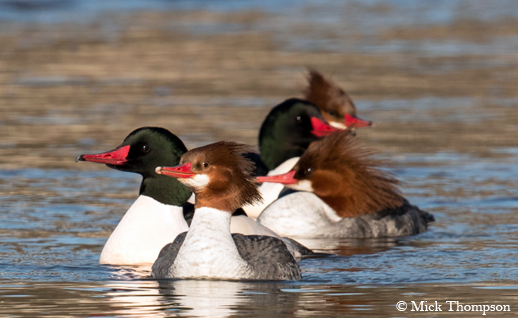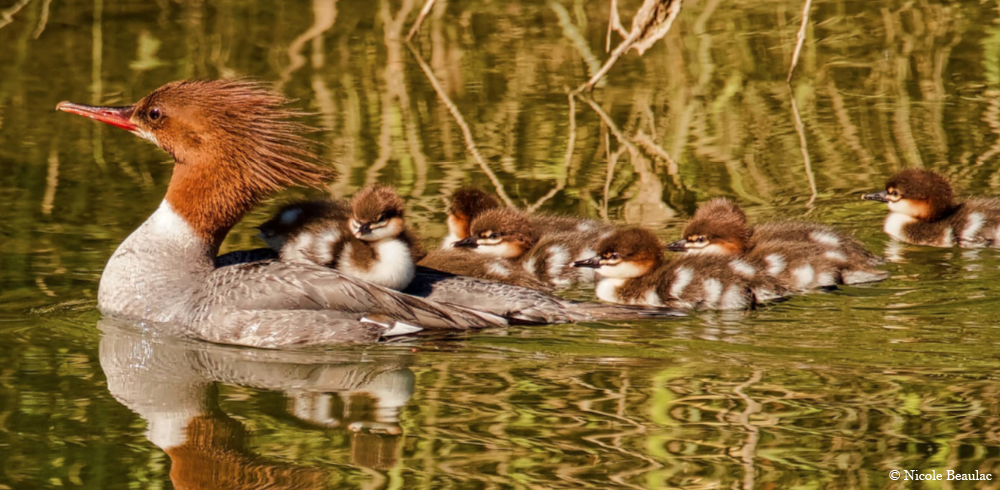 When many people hear the word “duck”, they picture a mallard – and, more particularly, the emerald green head of a male mallard. However, throughout the James River watershed, there are a wide variety of ducks.
When many people hear the word “duck”, they picture a mallard – and, more particularly, the emerald green head of a male mallard. However, throughout the James River watershed, there are a wide variety of ducks.
One of these is the Common Merganser, also known in Britain as a Goosander. The common merganser is a member of the genus Mergus. Like others in this genus, the Common Merganser has a crest of long head feathers. Females and juveniles are primarily grey with a cinnamon-colored topknot. Adult males are easy to identify, having a white body and a black head with an iridescent green gloss. They can be found primarily in fresh water, swimming in the river or hanging out on the banks. Mergansers are among the larger species of duck.
Mergansers primarily eat fish, augmented by other aquatic prey, and they have serrated edges on their bills to help grasp the fish. The serrated edge resembles the teeth of a saw, meaning they are often referred to as “sawbills.” They are diving ducks and, when hunting, will occasionally work in a group by forming a semicircle to push fish to shallower waters where they are more easily caught. Like other waterfowl, a healthy river with abundant grasses is essential to the mergansers well-being. While mergansers do not, themselves, eat aquatic vegetation, the fish they eat rely on these grasses to thrive. As seen in the State of the James, underwater grasses declined to an overall score of 26% in 2017. In order to combat this and to help protect the bedrock of the river’s habitat, we need to focus on nutrient and sediment reductions.

